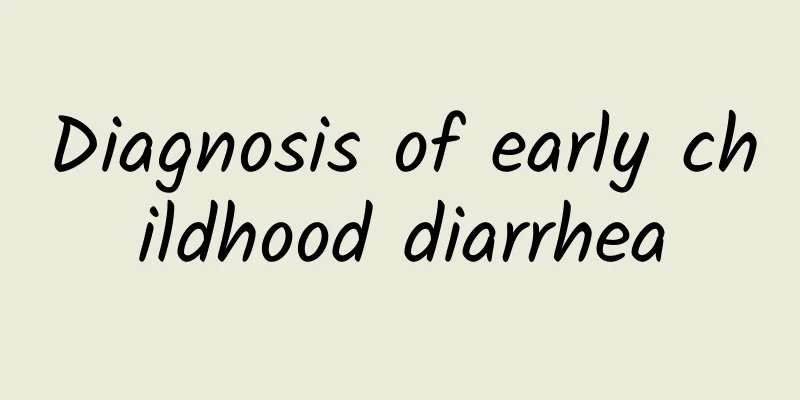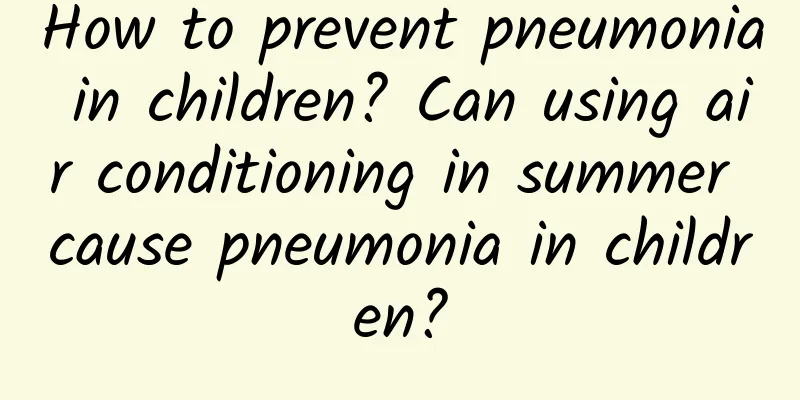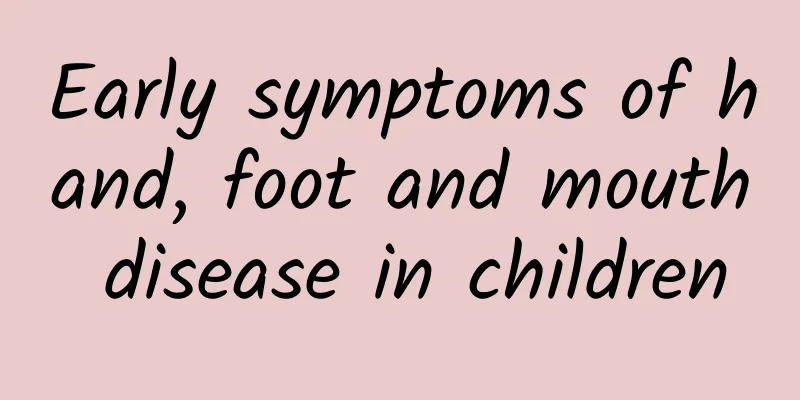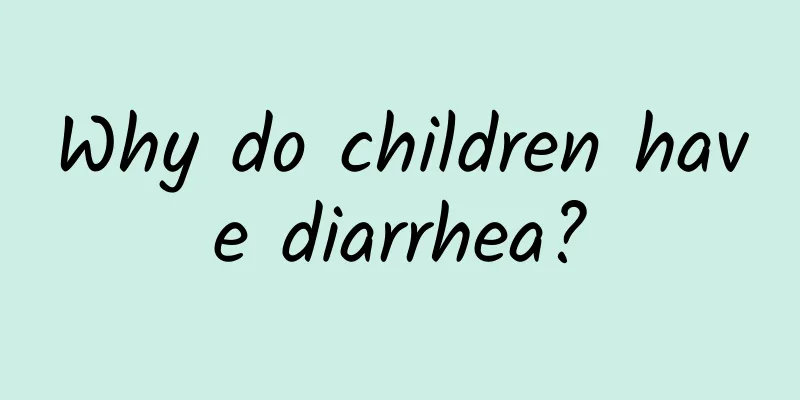Diagnosis of early childhood diarrhea

|
The occurrence of pediatric diarrhea affects the health of many children and causes serious abnormalities in their gastrointestinal tract. If diarrhea is not treated in time, it will affect the children's eating and cause them great harm. We need to have a deep understanding of pediatric diarrhea. Let's take a look at the diagnostic methods for pediatric diarrhea. The clinical diagnosis is made based on the onset season, medical history (including feeding history and epidemiological data), clinical manifestations and stool characteristics, combined with routine stool examination, bacterial culture, complement fixation test, enzyme-linked immunosorbent assay and electron microscopy. Dehydration, acidosis and electrolyte imbalance must be determined. Clinical diagnosis can be easily made based on medical history, physical examination and stool characteristics. According to the duration of diarrhea and the severity of symptoms, the stage and type of diarrhea can be determined; the presence of dehydration and the degree and nature of dehydration, acidosis and electrolyte imbalance can be determined, and the cause of the disease can be sought, such as improper feeding, internal and external intestinal infection, etc. 1. Diagnostic basis: 1. Changes in stool characteristics, such as loose stools, watery stools, mucous stools, or bloody stools. 2. More frequent bowel movements than usual. (II) According to the course of disease, it is divided into: 1. Acute diarrhea - duration is less than 2 weeks. 2. Persistent diarrhea - duration is between 2 weeks and 2 months. 3. Chronic diarrhea - duration is more than 2 months. (III) According to the condition, it is divided into: 1. Mild: no dehydration or poisoning symptoms. 2. Moderate: mild to moderate dehydration or mild poisoning symptoms. 3. Severe: severe dehydration or obvious poisoning symptoms. (IV) Etiological diagnosis: 1. Infectious diarrhea: 1) For acute enteritis, the most likely pathogen can be estimated based on stool characteristics, stool microscopy, epidemic season and age of onset, which can be used as a reference for medication. Watery stools in epidemic diarrhea are mostly caused by rotavirus or toxigenic bacteria, especially in infants under 2 years old. If it occurs in autumn and winter, rotavirus enteritis is more likely; if it occurs in summer, etec enteritis is more likely. If the stool is mucus or purulent, invasive bacterial infection should be considered, such as eiec enteritis, Campylobacter jejuni enteritis or Salmonella enteritis. 2) Units with conditions should conduct etiological examinations such as bacteria, viruses and parasites. Stool bacterial culture can be performed for patients with more white blood cells in stool microscopy; patients suspected of viral enteritis can obtain stool filtrate or centrifugation supernatant in the acute phase (within 3 days of onset) and stain them with electron microscopy or immunoelectron microscopy; immunological methods (such as ELISA, solid phase radioimmunoassay, etc.) can also be used to detect viral antigens in stool and specific antibodies in serum. Viral RNA gel electrophoresis can directly extract RNA from feces, and rotavirus electrophoresis typing can be performed according to characteristic RNA patterns, which are divided into long and short types. Although serological examinations of patients with intestinal infections caused by various pathogens are not very helpful in clinical practice, they are quite meaningful for epidemiological surveys and retrospective diagnosis. After the pathogen is identified, it can be diagnosed according to etiology, such as pathogenic Escherichia coli enteritis, Campylobacter jejuni enteritis, rotavirus enteritis, etc. 2. Non-infectious diarrhea: Based on medical history, symptoms and examination analysis, it can be diagnosed as bait-induced diarrhea, symptomatic diarrhea, allergic diarrhea, etc. 5. Assessment of dehydration: The degree and nature of dehydration, electrolyte imbalance and acidosis are determined based on clinical manifestations, blood electrolytes and carbon dioxide binding capacity measurements. Through understanding, I believe that parents and friends are already very clear about the diagnosis method of pediatric diarrhea. Diarrhea is indeed a common disease, but in daily life we must pay attention to the prevention of the disease, adjust the children’s diet, do not let them eat too raw or cold food, and let them drink some warm boiled water. |
<<: Diagnostic criteria for early childhood diarrhea
>>: Diagnosis and treatment of diarrhea in children
Recommend
How to treat patent ductus arteriosus
How to treat patent ductus arteriosus? Patent duc...
Is there any folk remedy for treating convulsions?
Convulsion is also known as convulsion. It is ver...
Can Kidney Disease in Children be Cured?
Can childhood kidney disease be cured? In recent ...
What causes hernia in children?
Pediatric hernia, as a common pediatric surgical ...
What are the triggering factors of pneumonia in children?
Pneumonia in children is mainly caused by infecti...
What porridge is good for children with diarrhea? What porridge is good for children with diarrhea?
Children have relatively poor resistance and are ...
What is the difference between Procaterol and Itanjing? What are the effects of Procaterol and Itanjing?
The occurrence of cough is often accompanied by m...
How about the children's lung cough granules? Is the effect of the children's lung cough granules good?
Pediatric Lung Cough Granules are a pure Chinese ...
What is the cause of neonatal jaundice?
What is the cause of neonatal jaundice? Nowadays,...
How to care for a one-year-old baby with a cold, cough and phlegm
Colds are mostly caused by inflammatory stimulati...
What to do if children have high jaundice
What should I do if my child has high jaundice? T...
What are the tests for mumps in children?
For patients with mumps, the treatment process is...
How to identify herpetic pharyngitis and hand, foot and mouth disease
Herpetic pharyngitis and hand, foot and mouth dis...
Which department should I go to for acute laryngitis in children?
As the saying goes, illness comes from the mouth,...
What is polio?
Poliomyelitis makes it impossible for children to...









